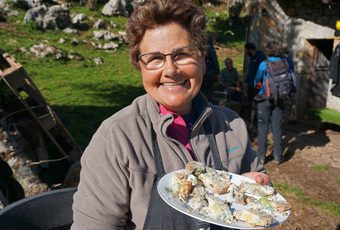Overtourism – should we all stop travelling?
This article was written by Joanna Simmons of ResponsibleTravel.com
In 2017, overtourism – the phenomenon of too many people, visiting the same place at the same time – hit the headlines. You’ve probably seen the pictures: historic cities with streets choked by visitors, streams of passengers pouring off cruise ships, ancient sites photographed by hundreds of people squished onto a viewing platform. It’s a lose-lose situation, which degrades the visitor’s experience, pressurises the local infrastructure and alienates local people. It also begs the question: what do we, as eager travellers, do in response?
Simply abandoning travel is not the solution. Do this, and we let down the millions of local people whose livelihoods depend on visitors. The answer is better travel, rather than no travel. The word overtourism has been widely used in the media recently, bringing attention to this sensitive issue, but it can also become a stick to beat the travel industry with. Overtourism does not mean all tourism is bad. It doesn’t even mean tourism to the world’s busiest places has to be damaging. Don’t be put off. Overtourism is more than just a hashtag term; it’s a real issue that is evolving and there are many small responsible operators out there grappling with it, and taking thoughtful steps to reduce their contribution to this problem, or sidestep it altogether.
One neat solution is to avoid overtourism hotspots and seek out less popular, less familiar destinations. Certain locations, such as Barcelona, are marketed globally, visited by tourists on cruise ships and cheap flights and, so far, remain unregulated in terms of visitors allowed in. As Barcelona sponges up hoards of visitors, other beautiful cities nearby remain quiet. Girona, for instance, just 100km up the coast is packed with churches, museums and cobbled lanes. The simple solution is to go there instead. There is no compromise, in terms of culture, architecture and atmosphere, but there are far fewer people.
Another solution to overtourism is to travel to familiar places in unfamiliar ways. Joining a tour that uses expert knowledge to lead you to popular sites via clever routes and at less busy times means you experience minimum crowds and maximum enjoyment. The sacred site of Machu Picchu is a great example. Most people who travel to Peru want to see this wonder of the ancient Inca world, and to reach it via the famous Inca Trail. Although the Peruvian government limits the number of trekking permits to 500 a day, a figure which includes guides and porters, that’s still quite a lot of people heading off in the same direction, often at the same time. But there are ways to avoid the crowds.
The vast majority of people opt for the three-day trek which aims to arrive at the Sun Gate for sunrise on the final, fourth day. This means campsites can be busy, with typically more than 300 people spending their last night on the trail in Winaywayna. They then all get up before dawn to crowd around the Sun Gate for sunrise, before exploring the site and catching that afternoon’s train back to Cusco.
This regimented approach to hiking the Inca Trail leads to surges in numbers at certain times. It also means visitors miss out on some of the most special times of day. Ironically, since Machu Picchu is in a cloud forest, it is often very misty in the early mornings, so most people at the Sun Gate don’t get the dramatic, golden first glimpse they’ve crowded in for. By the time the sun breaks through and the site is revealed in all its glory, they’re already on a train back to Cusco.
Simply tweaking the timings makes a huge difference. Setting off in the afternoon avoids the crowds that march off at daybreak on the first day of trekking. Spending more time hiking up, rather than sticking to the established three-day schedule, also allows time to acclimatise and enjoy the views. You can then arrive at the Sun Gate in the late afternoon when the light is at its best and Machu Picchu is at its quietest. If you spend another night in a hotel nearby, you also have time to come back the next day, again seeking out those quiet moments when the three-day trekkers, on their tight schedule, have left.
Travelling thoughtfully, with the guidance of a local expert, means the world’s popular locations can remain wonderful to experience. Overtourism is, by definition, a localised issue, affecting a few hotspots often at just a few times of the year. So remember that there are always other exciting places to discover, perhaps just up the road from a heaving hotspot, which will be much less busy and much more pleased to see you.
Get in touch Subscribe to The Pothole
The Pothole is Pura Aventura's popular monthly email. We share what we love, what interests us and what we find challenging. And we don't Photoshop out the bits everyone else does. We like to think our considered opinions provide food for thought, and will sometimes put a smile on your face. They've even been known to make people cry. You can click here to subscribe and, naturally, unsubscribe at any time.
The Pothole is Pura Aventura's popular monthly email. We share what we love, what interests us and what we find challenging. And we don't Photoshop out the bits everyone else does. We like to think our considered opinions provide food for thought, and will sometimes put a smile on your face. They've even been known to make people cry. You can click here to subscribe and, naturally, unsubscribe at any time.









